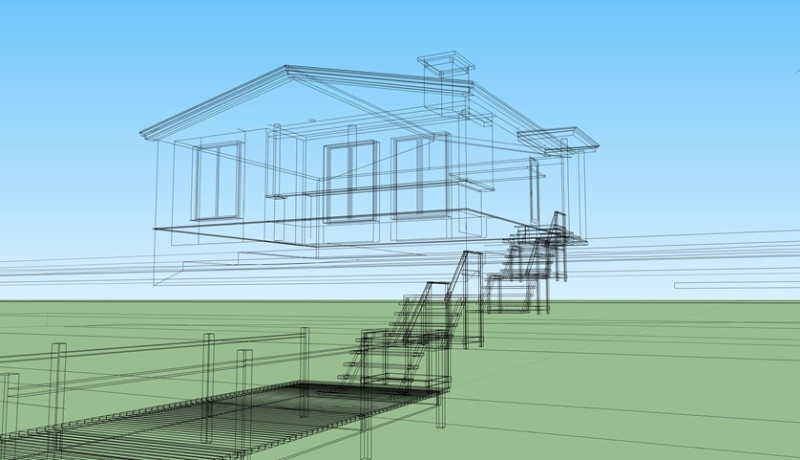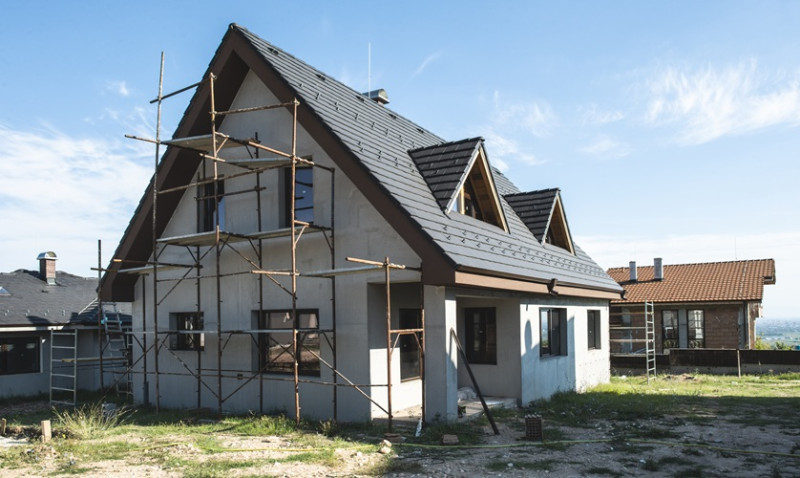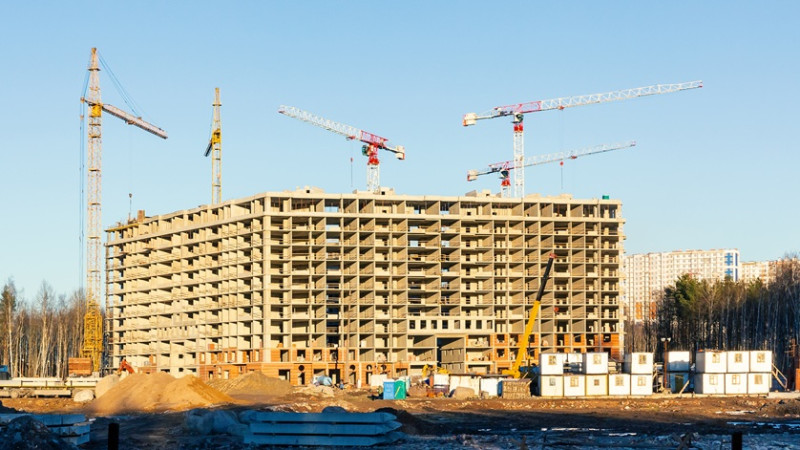
Taking on a house build is one of the most exciting — and expensive — journeys you can embark on. Whether you're self-building your dream home or commissioning a design, there are no two ways about it: your contractor plays a vital role in whether your plans come to life or fall flat. But here's the thing — no matter how experienced, personable or professional your contractor may appear, there are a few key things they often fail to mention upfront.
In this guide, we dive into the unexpected (and sometimes inconvenient) truths that most contractors don't readily share. If you're a UK-based DIY enthusiast, a young professional planning your first home project, a seasoned designer or architect, or a tradesperson working alongside a larger team — this one's for you.
1. They May Not Understand (Or Care About) Your Vision Entirely
Your dream home is unique. Every corner, material, and colour palette probably has a personal story or purpose. But many contractors operate from a logistical mindset — their priority is to get the job done on time and within budget. While that makes sense from a project management position, it often means your personal design preferences can be pushed aside if not clearly documented or defended.
It's not unusual for some contractors to default to materials, layouts or finishes they’re most familiar with — even if they don’t align with what you had in mind. They may think using standard building materials or common layouts will "save you money" without truly weighing your architectural or aesthetic goals.
To protect your vision, document everything. Use detailed design plans, 3D models if available, and product specification sheets. Always confirm decisions in writing so nothing gets “lost in translation" during construction.
Better still, consider hiring an independent project manager who can act as a liaison between you and the contractor throughout the build. This added layer of accountability ensures your voice stays loud and clear from groundbreaking to handover.
2. Subcontractor Work Quality Can Be Inconsistent
Many people are unaware that most contractors don’t handle all the jobs themselves. Electricians, plumbers, plasterers, and even bricklayers are often subcontracted — and the quality of their work can vary wildly.
Worse still, unless you're involved daily, you might never meet the people who are actually doing the work on site. You might find top-quality workmanship one week, then sloppy, rushed jobs the next — all under the same contractor's banner.
Ask your contractor upfront about how they vet their subcontractors. Are they certified? Insured? How long have they worked with them? And most importantly — can you request (and speak directly to) those tradesmen before work begins?
If you're project managing yourself, request a list of scheduled subcontractors and arrange to inspect their references or previous sites. In the UK, many competent tradespeople are registered with schemes like NICEIC (for electricians) or Gas Safe (for installers), so make sure these credentials are verifiable.
3. “Fixed Costs” Rarely Stay Fixed
Oh, the dreaded final invoice shock. Many UK homeowners who embark on home builds start out with a quote that feels reasonable — only to see it balloon as the months progress. Why? Because most fixed-price quotes aren’t that fixed.
Builders often base quotes on standard pricing assumptions. If structural complications arise, material prices go up, or a particular design element proves more labor-intensive than expected, your contractor may start adding “variations” — usually at a premium.
In 2024, building material prices in the UK continue to be unstable, particularly for timber, cement, and insulation. Inflation, Brexit-related supply issues, and global demand all mean surprises aren’t just possible — they're likely.
The key here is to ask for a quote that includes a breakdown of cost types: labour vs materials; allowances for contingencies; margin percentage for contractor overheads. Ask for a clause that limits variation spending to a defined percentage unless expressly approved by you in writing.
| Common Cost Overruns | Typical % Increase | How to Avoid |
|---|---|---|
| Unforeseen Site Issues | +10-15% | Order a thorough site survey early |
| Material Substitutions | +5-20% | Pre-approve brands/products; don’t settle for “like for like” |
| Design Changes Mid-Project | +20%+ | Freeze design decisions before construction starts |
4. Communication Isn’t Always Proactive
While some contractors are great communicators, many are not. You may find yourself chasing updates, wondering when certain trades will appear, or questioning why things look different than you expected.
Most UK homeowners — especially young professionals used to digital communication — are shocked to find that many contractors still rely on phone calls or on-site chats, with little formal tracking or documentation along the way.
To bridge the communication gap, request regular progress reports. That can be as simple as weekly emails with photos and notes or even using project management tools like Buildertrend or Trello. Be sure to agree on a communication protocol from day one: How often will you meet on-site? What happens if delays occur? Who is your main point of contact?
Clarity avoids chaos. Even if you’re not actively managing the build, laying out clear expectations prevents misunderstandings and keeps the project moving forward without costly mistakes.
5. Some Corners May Be Cut Without You Knowing
No one wants to believe it, but it’s true: if you’re not watching carefully, even honest contractors may cut corners. Whether it's reducing insulation thickness, skipping protective membranes or rushing through waterproofing details, small cheats can lead to long-term problems — especially with energy efficiency and structural integrity.
In the UK’s climate, where damp and cold can wreak havoc, hidden faults in roofing, plumbing or insulation can cost thousands to fix down the line.
We recommend getting an independent building inspector or snagging professional involved at various stages — particularly before walls are plastered or foundations poured. It may feel like an added cost upfront, but it provides peace of mind, especially if you're planning to live in the home long term or eventually sell it.
Also, familiarize yourself with UK Building Regulations, especially Part L (energy efficiency), Part P (electrical safety) and Part B (fire safety). Even if your contractor is responsible for compliance, it helps to know what shortcuts look like and when to challenge them.
6. Weather, Local Councils, and Delays Are Regular Issues
Contractors tend to focus on what they can control — timelines, tools, and teams. But they’re often less forthcoming about the realities of weather disruptions, delays in product delivery, or waiting on local council approvals.
Depending on your region, planning permission decisions (when needed) can take weeks if not longer. And building control officers don’t always show up on time, causing gaps in sign-offs and work schedules.
The UK weather doesn’t help either. Heavy rain, snow, or just prolonged dampness can easily delay external works. Foundation pours, bricklaying, and roofing tasks often require dry weather, which means flexibility is crucial.
Always incorporate a weather and council delay buffer into your timeline. Most professional contractors do this subtly but won’t always tell you — because it can make their project quote seem longer or costlier than the next builder’s on paper.
7. You Might Need to Be More Hands-On Than You Think
Many homeowners understandably hire a contractor thinking they can sit back and relax. In truth, building a house is a hands-on project — even if you’re not on site daily.
You’ll be making dozens of decisions every week: tile finishes, window heights, paint types, lighting placements — even the style and height of skirting boards. If you’re unavailable when questions arise, contractors will guess… or delay. Neither is ideal.
This is particularly important if you're a homeowner with strong design intentions or if you're an architect/designer working on your personal project. Aesthetic precision can easily get lost without hands-on involvement.
Make time in your calendar for regular site visits, maintain open lines of communication, and don’t be afraid to challenge or question progress when it doesn't align with your expectations or plans.
Final Thoughts
Building a house in the UK is a high-stakes game of planning, persistence and proactive decision-making. While a reputable contractor can be a superb ally, it's important to understand that they aren’t miracle workers — nor mind readers.
Their job is to build — but it’s on you to safeguard your vision, your wallet, and your sanity. With clear documents, constant communication, and an eagle eye for regulations and standards, you’ll protect yourself from the surprises they didn’t mention in the brochure.
Do the groundwork, speak up early, and partner with professionals who see your project not just as another job site, but as a future home crafted with care.






